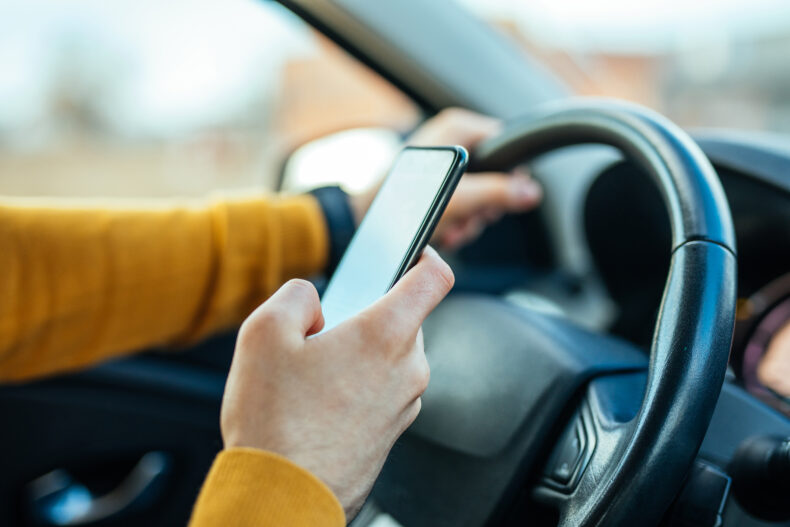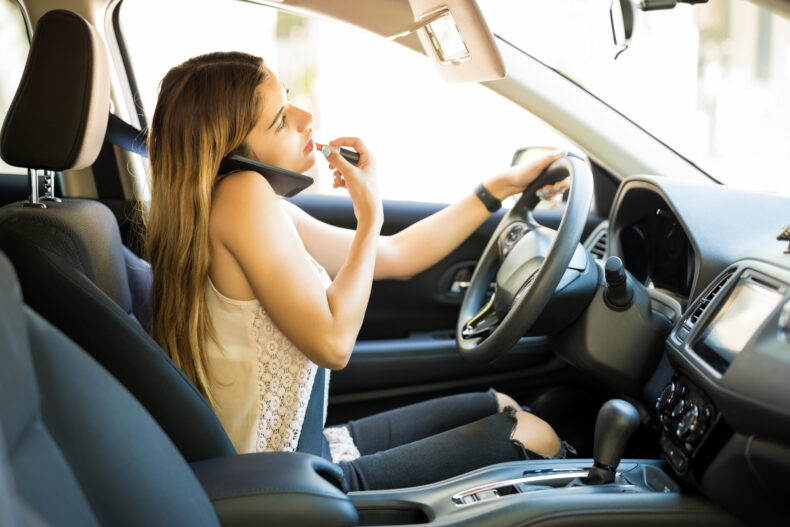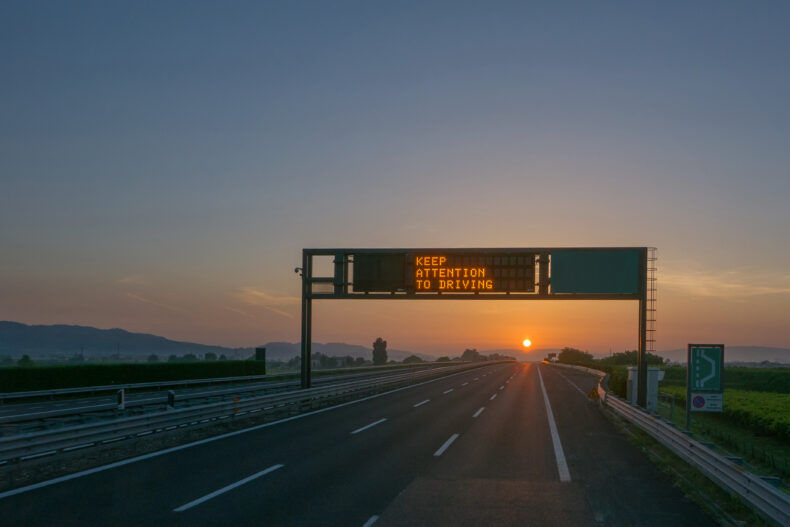Distracted Driving Myths

Driving distracted has become one of the most dangerous and deadliest habits in the U.S. On average, nine people are killed a day in distracted driving accidents. All it takes is a few seconds of inattention behind the wheel to cause a serious crash.
In order to prevent future accidents and injuries, it’s important to understand some common distracted driving myths and how to avoid them.
Myth #1: It is not illegal to text and drive in California
Fact: Actually, it is. Under California law, it is illegal to text or talk while driving unless you are using a hands-free device. If you are pulled over for texting or using a cell phone, you could receive a fine of $162 – and that’s just for the first citation. The fine amount increases with each violation. The law is even more strict when it comes to young drivers. Drivers under the age of 18 are not allowed to use any type of handheld device or hands-free cell phone while driving.
California is one of 48 states that have banned texting while driving.
Myth 2: Cell phones are the only distraction
Fact: While cell phone use and texting are the most common distracted driving behaviors, there are many more activities that can take your mind and eyes off the road. Eating, drinking, taking photos, applying makeup, adjusting the radio, using navigation systems, and talking to passengers are some forms of distracted driving that increase the risk of getting into a collision.
Myth #3: Hands-free devices are safe to use while driving
Fact: While hands-free devices eliminate certain physical distractions associated with using a mobile phone, they can still be mentally distracting. Talking with hands-free technology requires the brain to multitask, something that cannot be safely done while driving. Having a mobile phone conversation can divert a driver’s attention from the road and impair their ability to react to potential hazards. Drivers may be looking, but they don’t see, known as “inattentional blindness.”
Myth #4: Distracted driving only affects young or inexperienced drivers
Fact: It is true that young drivers are most at risk for serious and fatal accidents. In fact, the leading cause of death for teens aged 15-20 are vehicle collisions. Yet distracted driving is a risky behavior that affects drivers of all ages and experience levels. Even looking out of your window for a few seconds to catch a scenic view can cause an accident.
Myth #5: Distracted driving is not a significant problem
Fact: Driving distracted is the leading cause of most motor vehicle accidents. A study conducted by the National Highway Traffic Safety Administration (NHTSA) and the Virginia Tech Transportation Institute (VTTI) found that 80% of collisions and 65% of near collisions involve some type of distraction. The study also revealed that the distraction occurred within just three seconds before the crash.
Texting is the most dangerous form of distracted driving because it combines the three types of distraction: visual, manual, and cognitive.
Myth #6: Distracted driving is only dangerous on highways and at high speeds
Fact: Driving distracted is dangerous at any speed. Thousands of accidents occur in parking lots and garages, where one wrong move can result in a serious collision between a car and a pedestrian. The National Safety Council reports that one in five accidents happen in parking lots, and as many as 66% of drivers may be distracted as they pull into shopping centers. Accidents are especially common during the busy holiday season when pedestrians and drivers are likely to be distracted.
Myth #7: Driving under the influence is more dangerous
Fact: According to the NHTSA, texting while driving is six times more dangerous than drunk driving. Reading or sending a text takes your eyes off the road for about five seconds. While that may seem insignificant, when traveling at 55 mph, that’s enough time to cover the length of a football field blindfolded!
Unfortunately, distracted driving still remains a common behavior. A recent study found that 43.7% of people admitted to reading a text message while driving and 42.7% acknowledged sending a message below the wheel, even though they could be caught by the police.
Myth #8: Texting at traffic lights is OK
Fact: You might think that texting, checking your email, or opening up social media at a red light is perfectly legal. Yet the same California law we talked about at #1 applies and does not distinguish between moving vehicles and stopped vehicles. Therefore, it is against the law to text or have a mobile phone conversation at a red light.
Texting at a stop light increases the chance of a rear-end collision, which causes some of the most frequent minor and serious car accidents across California.
Myth #9: New technology is making cars safer
Fact: While newer cars are generally safer, they do not come without hazards. High-tech features such as front collision warning and automatic emergency braking have reduced accidents, but other features may cause distraction. Your car’s infotainment system, head-up display systems, and hands-free Bluetooth are all potential distractions that can increase the risk of a collision.
With the plethora of new technologies in cars, it’s best to figure out all of your vehicle’s features while parked or before you start driving, and never during your drive.
Myth #10: It’s OK to drive with headphones on
Fact: It is illegal to wear headphones or wireless earbuds over or inside both of your ears while driving in California. If caught, you could be liable for a ticket of almost $200 and a point on your license. The law excludes those operating emergency vehicles, for safety reasons, and drivers who are hard of hearing.
However, driving with only one of your earbuds is legal. If you’re going to do this, keep your left ear (your ear facing the road) open.
April is Distracted Driving Awareness Month
The National Highway Traffic Safety Administration has designated April as National Distracted Driving Month. Now is the perfect time to readjust your driving habits and keep in mind these driving safety tips:
- If you need to send a text or make a call, pull over to a safe location and park your car.
- Put your phone where you can’t see it, or enable the Do Not Disturb feature.
- Program your GPS, set your playlist, or set up any other devices before you start driving.
- Stay cool. Anxiety and stress can lead to your mind wandering and unconscious distraction. Take a deep breath and focus on driving.
- Encourage friends and family to drive distraction-free.
Were You Injured in a Distracted Driving Accident?
If you sustained injuries in a car accident due to a distracted driver, you need to speak with an experienced distracted driving accident lawyer as soon as possible. Contact us online or call our Orange County, CA office directly at 800-719-9779 to schedule your free consultation.
CALL NOW


